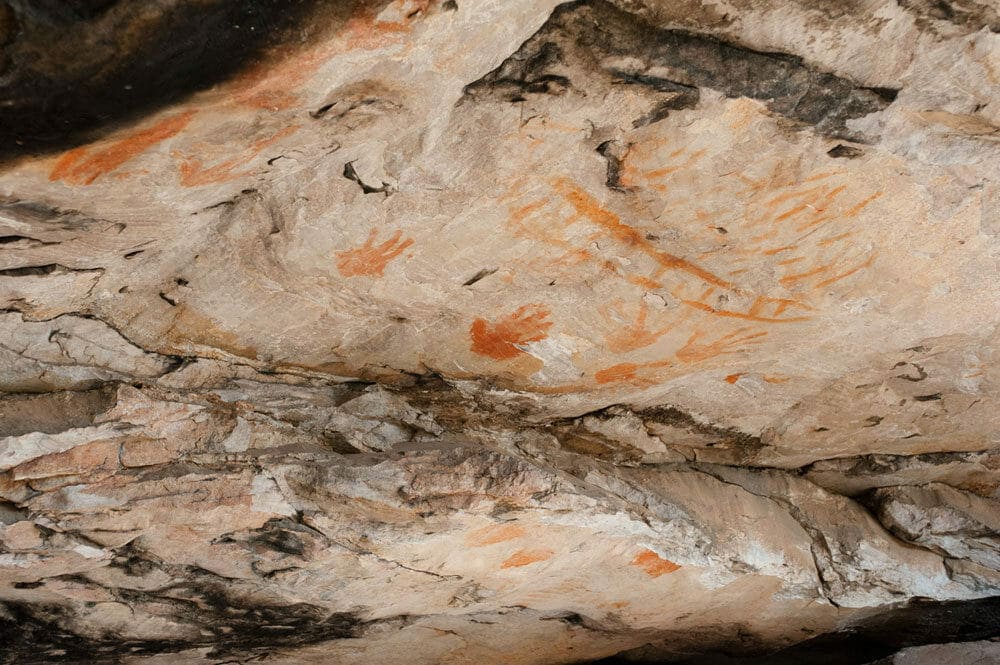Bunjil’s Shelter, a remarkable site located in the Grampians National Park of Victoria, Australia, is renowned for its stunning ancient rock art that tells the stories of the Indigenous Australian culture. The site showcases the incredible talent of the Indigenous people who lived in harmony with the land for thousands of years. This article delves into the significance of Bunjil’s Shelter, the artistry found there, and how it contributes to understanding Australia’s rich Indigenous heritage.

The Historical Significance of Bunjil’s Shelter
Bunjil’s Shelter is not just a breathtaking natural formation; it holds profound historical value that dates back around 20,000 years. This rock art site is named after Bunjil, the creator spirit in the Aboriginal culture, symbolizing strength and sovereignty. The intricate artworks depict various animals, including kangaroos and emus, as well as human figures involved in spiritual and ceremonial activities. Each illustration serves as a narrative that connects modern Australians to the extensive cultural tapestry woven by Aboriginal communities. Furthermore, the site acts as a reminder of the importance of preserving Indigenous heritage amidst modern development. The stories encapsulated in the rock art provide insights into the understanding of the environment, seasonal changes, and survival strategies of the Indigenous peoples, emphasizing their deep respect for nature.

The Artistic Elements of Bunjil’s Shelter
The artworks at Bunjil’s Shelter primarily consist of rock engravings and paintings created using natural pigments sourced from the surrounding earth. Techniques featured include stenciling and freehand painting, with ochre being a dominant medium. The colors used display a vibrant palette of reds, yellows, and blacks that have stood the test of time, showcasing the technical skills of the artists. Not only do these artworks depict wildlife, but they also represent the spiritual beliefs and stories of the Aboriginal people. The placement of these artworks within the shelter is deliberate, often aligned with the sun’s movement, revealing the sophisticated understanding of astronomy possessed by Indigenous Australians. Explorers and researchers routinely visit the site to study its considerable insights into past societies, environmental conditions, and cultural practices. This living, breathing tableau serves as a vital historical record, inviting onlookers to reflect on the artistry and stories it communicates.
Visiting Bunjil’s Shelter: Tips and Guidelines

For those looking to explore Bunjil’s Shelter, there are several important tips and guidelines to enhance the experience while ensuring the site’s conservation. First, plan your visit during daylight hours, as many of the best views of the rock art are illuminated at certain times, enhancing visibility. Second, consider wearing appropriate footwear, as the terrain can be uneven and may require a short hike through natural bushland. Third, be respectful of the site’s cultural significance; refrain from touching the rock art to prevent degradation. Fourth, photography is allowed, but use discretion to avoid flash which can damage ancient pigments. Pack a small backpack with essentials including water, sunscreen, and snacks to ensure you remain hydrated and comfortable during your visit. Lastly, consider joining a guided tour led by Indigenous peoples to gain even deeper insights into the history and significance of the shelter.
Key Features of Bunjil’s Shelter
- Historical Artistry: Home to stunning rock art that dates back thousands of years.
- Cultural Significance: A site integral to understanding Indigenous Australian heritage.
- Natural Beauty: Set within the picturesque Grampians National Park.
- Educational Opportunities: Options for guided tours from knowledgeable Aboriginal custodians.
- Conservation Efforts: Ongoing initiatives to preserve and protect the site and its artwork.

Conclusion
Bunjil’s Shelter stands as a significant cultural and historical landmark, representing the rich and intricate narratives of Indigenous Australians. The ancient rock art not only provides aesthetic value but also plays a crucial role in educating the public about Indigenous culture, spirituality, and history. By visiting and engaging with the shelter respectfully, individuals contribute to ongoing efforts to preserve this important heritage site for future generations. The blend of natural beauty, historical relevance, and artistic prowess at Bunjil’s Shelter makes it a must-visit destination for those interested in Australia’s Indigenous past and its lasting impact on the present.
FAQs
1. Where is Bunjil’s Shelter located?
Bunjil’s Shelter is located in the Grampians National Park in Victoria, Australia, situated about 260 kilometers northwest of Melbourne.
2. How old are the artworks at Bunjil’s Shelter?
The rock artworks at Bunjil’s Shelter date back around 20,000 years, offering a glimpse into the deep historical roots of Indigenous cultures in Australia.
3. Can I take photographs at Bunjil’s Shelter?
Yes, photography is allowed, but it is advised to avoid using flash to protect the delicate pigments of the ancient rock art.
4. Are there guided tours available to Bunjil’s Shelter?
Yes, there are guided tours available, often led by Indigenous custodians who can provide invaluable insights into the culture and significance of the site.
5. What should I wear when visiting Bunjil’s Shelter?
It is recommended to wear comfortable and sturdy footwear, as the terrain can be uneven, and you may need to hike to access the shelter.